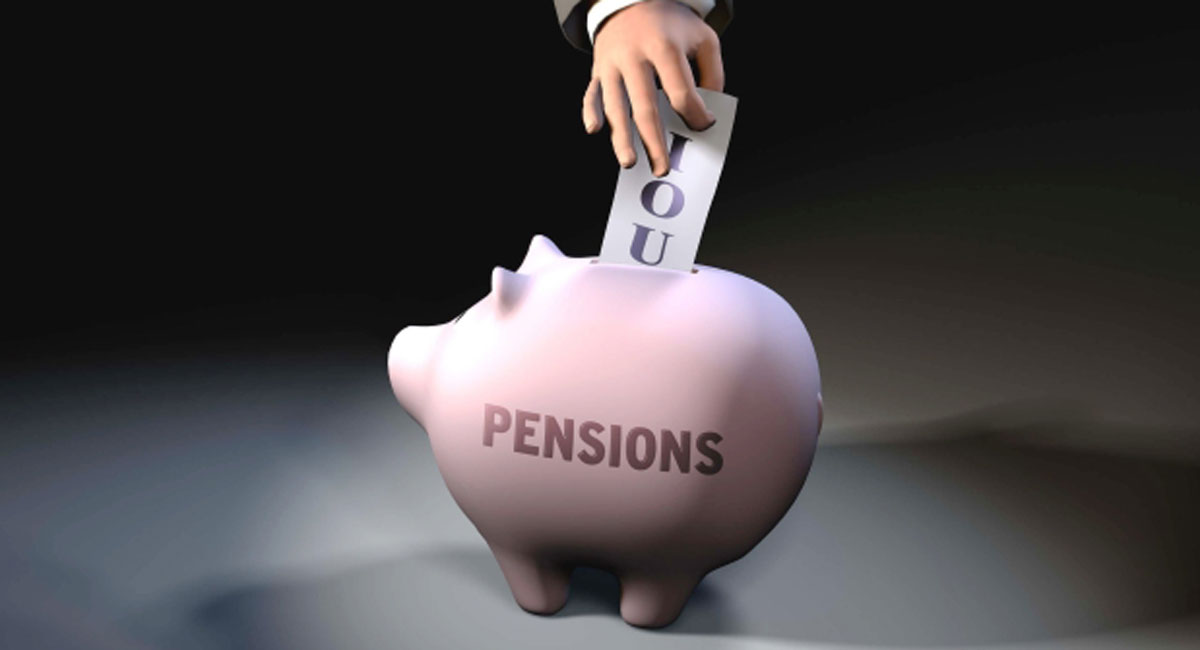Harvey Enchin of the Vancouver Sun did a story on the fact that boomer business owners say they want to retire in the next three to five years, which means selling their businesses but they have not prepared their companies to get the highest valuation. Here’s the story.
Part One: Pension planning — Funding our golden years
Â
Canadians are worried about their future. A majority say they live paycheque to paycheque and have no financial plan. In a poll by the Canadian Payroll Association, 57 per cent said they’d face financial difficulty if their pay was delayed by one week. Forty per cent said they expect to retire later than they had previously planned, the oft-cited reason being, “I’m not saving enough for retirement.”
Their concerns are shared by the guardians of Canada’s pension system, whose actuarial assumptions are based on historical investment returns that are no longer achievable in a climate of low interest rates and unreliable equity markets.
Compounding the problem is the demographic bulge of baby boomers entering their golden years. Seniors represent the fastest growing segment of Canada’s population, while the ratio of workers paying into the Canada Pension Plan to support them is declining.
The CPP is the pillar of the national retirement-income system and Canadian workers and their employers contribute to it 9.9 per cent of “pensionable” earnings, a rate the Chief Actuary of Canada says will sustain it for the next 75 years.
CPP benefits provide a floor for retirement income, which is complemented by Old Age Security, the Guaranteed Income Supplement, workplace pensions and individual savings.
But, notwithstanding assurances from the Chief Actuary, the public pension system is under stress. It was put in place in simpler times when the collision of demographics and economics was far from top of mind.
Ambitious social policyWhen legislation to create the CPP was enacted in the spring of 1965 (it came into force in January 1966), Lester B. Pearson, a former diplomat, was prime minister, having toppled the Conservatives’ John Diefenbaker in 1963.
Pearson embraced an ambitious social policy agenda mapped out by a reformist faction of the Liberal Party, not only introducing the public pension plan, but adopting for the entire country the universal medicare program socialist Tommy Douglas had pioneered in Saskatchewan years earlier (although a $750-million deficit forced Pearson to delay implementation of the Medical Care Insurance Act until 1968).
It was a time of optimism in Canada, which was gearing up for its centennial celebrations under a new flag; the economy was at a postwar peak and prosperity was at an all-time high. Gross domestic product grew at a robust 6.7 per cent in 1964, 6.6 per cent in 1965 and 6.8 per cent in 1966. The unemployment rate was a negligible 3.6 per cent (economists consider four per cent to be full employment). Net debt per capita stood at $789, with a population of approximately 20 million.
Compare those statistics with these: GDP grew by 0.4 per cent in 2008, shrank by 2.5 per cent in 2009 and grew again by 3.1 per cent in 2010. The revised estimate for 2011 from TD Bank (thanks to a second-quarter contraction) is growth of 2.4 per cent this year and 1.7 per cent in 2012. The latest unemployment rate is 7.5 per cent, although it averaged 8.5 per cent from 1976 through 2010, and the net debt per capita is more than $8,000 on a population of 34 million.
The costly social safety net that appeared affordable 45 years ago — a contribution rate of just 1.8 per cent supported the CPP for the first 20 years of its existence — now looms as one of the federal government’s biggest socio-economic liabilities. Transfer payments to provinces and territories in support of social services are the single largest component of federal spending, representing 53 cents of every tax dollar.
At the same time, high household debt, stagnant incomes, a low personal savings rate and a surge in the senior population suggest more people than ever will need to rely on the CPP.
A recent report by the Canadian Association of Retired Persons, for instance, revealed that 11 million Canadians, or 60 per cent of the workforce, had no access to a workplace pension plan. Statistics Canada paints an even bleaker picture: The coverage rate for registered pension plans in the private sector is just over 25 per cent.
These stark statistics have prompted some policy analysts, and the Canadian Labour Congress, to call for expanding the CPP by doubling benefits, which now amount to a maximum of $960 a month, although the average payout as of March 2011 was just $512.38.
But doubling benefits is not without risk: The additional contributions required would come out of the pockets of individuals already hard-pressed to make ends meet.
A study by the C.D. Howe Institute released in June calculated that if the CPP were fully funded — as the term applies to pensions in the private sector — the contribution rate would have to rise above 11 per cent based on recent rates of return.
The point C.D. Howe was making is that the CPP is not truly a defined benefit plan in that its payouts and other terms may be — indeed, have been — altered when necessary.
In short, CPP benefits are not guaranteed.
Larger senior populationOne reason pension issues are coming to a head is that the postwar baby boomers have reached, or are near, the conventional age of retirement, 65, when they are eligible to collect undiscounted CPP benefits.
The proportion of seniors in the population is growing faster than all other age groups. In 2001, one in eight Canadians was 65 or older; by 2026 it will be one in five.
This is the result of the dramatic drop in the fertility rate from three children or more per woman in the mid-1960s to 1.5, a level below the natural replacement rate.
Not only are fewer children being born, but life expectancy has increased to 79 years for men and 84 for women from 68 for men and 74 for women in the 1960s.
By 2031, the number of people in the labour force for each person not in the labour force and aged 65 or older could be less than three, compared with five in 2010, according to Statistics Canada projections.
The share of the labour force out of the total population aged 15 and over is forecast to decrease, with the overall participation rate falling from 67 per cent in 2010 to between 59.7 per cent and 62.6 per cent in 2031.
“The gradual movement of the baby boom cohorts into retirement and their replacement by much smaller cohorts explains this outcome,” say Laurent Martel, Eric Caron Malenfant and Andre Lebel, authors of the study Projected trends to 2031 for the Canadian Labour Force. “Neither a rise in immigration, an increase in fertility nor higher education levels significantly alters these trends.”
The challenges of an aging population are compounded by weak economic growth and fiscal constraints.
At the World Economic Forum in Dalian, China in September, former prime minister Gordon Brown, a past finance minister, predicted 10 years of slow growth in Europe and the U.S., high unemployment and rising protectionism in the absence of global cooperation and coordination.
Tough economic climateA report from TD Bank noted that Canada, being a small open economy, is vulnerable to slow growth in the U.S. and global economies. It added that with Canada’s household debt-to-income ratio approaching (now exceeding) 150 per cent and governments committed to reducing deficits, neither personal consumption nor government spending are likely to contribute much to economic growth. As it is, the federal deficit for fiscal 2012 is seen at $32.3 billion, while net debt stands at about $616.9 billion.
Given this economic climate, Canadians are hard-pressed to save for retirement. An Ipsos Reid survey for Sun Life earlier this year found that, on average, Canadians expect to retire three years later than they believed they would in 2007.
“The trend is to less optimism ...,” the survey said. “Canadians believe they’ll work much longer than the traditional retirement age of 65, are less confident about their retirement-readiness and outlook, and are increasingly more concerned about their financial well-being.”
In fact, only a third of eligible Canadians make a contribution to a registered retirement savings plan, despite the tax incentive to do so, and the median contribution is just $2,780, according to Statistics Canada. That suggests Canadians are using up a scant six per cent of total contribution room available to them.
It’s all well and good to talk about savings and RRSPs, but those who invested in equity markets using the recommended buy-and-hold approach over the last decade probably lost money.
Annualized equity market returns (including dividends) were negative in the U.S., Europe and Japan, statistics compiled by the Business Council of British Columbia show.
“Keeping money under the mattress would have been a better strategy,” said Jock Finlayson, executive vice-president of policy.
Fixed income investments have been a poor alternative, with interest rates at historic lows. This spells trouble for public and private pension fund managers, who have traditionally assumed an annual rate of return in the order of 7.5 per cent.
A more realistic return going forward is probably four or five per cent, and that would be jeopardized by a bear market or financial shock.
Even in more forgiving markets, individual investors fare poorly.
Poor decisionsIn a study advocating an expanded CPP, Jonathan Rhys Kesselman, an economics professor at Simon Fraser University, noted that individuals tend to make poor investment decisions (trying to time the market) and incur high management expense ratios on mutual funds and/or high transaction costs on small retail orders.
He demonstrated this phenomenon using U.S. figures for a 20-year period ended Dec. 31, 2009. Over that time, investors in equity mutual funds achieved an average annual return net of fees of just 3.17 per cent, more than five percentage points lower than the S&P 500 return of 8.2 per cent. They did even worse with fixed income funds, earning six percentage points a year below the returns of the benchmark Barclays Bond Index.
More than two-thirds of respondents in the Canadian Payroll survey said they would need a nest egg of more than $750,000 to retire comfortably, a sum expected to deliver 70 per cent of pre-retirement income over time.
Gordon Gibbons, senior vice-president of pensions and institutions at Leith Wheeler Investment Counsel in Vancouver, suggests another way of looking at retirement.
“Generally, this issue is framed in terms of investment markets not providing sufficient return to fund a comfortable retirement,” he said. “But for me the big issue is that it’s really the cost of retirement that’s gone up.”
“There’s no magic to that $750,000 figure,” Gibbons adds. “It’s pretty difficult to estimate what you’re going to need because you can’t foresee health care costs. The reality is most people adjust their lifestyles down in retirement.”
Because people are adaptable and can make changes to respond to different levels of income, Gibbons is optimistic about the future. Besides, he says, over the last 30 years, Canadian and U.S. equity markets have achieved triple-digit returns and bonds have delivered double-digit returns. One reason Canadian stocks disappointed over the last decade is that the period captures the collapse of heavily weighted Nortel.
Retirement savings should be viewed with a longer-term horizon, he said, and with that perspective, actively managed funds have done pretty well.
Indeed, Jack Mintz, a professor at the University of Calgary’s School of Public Policy, concluded in his study, Retirement Income Adequacy in Canada: Is there a crisis?, that low-income Canadians have good replacement income and poverty rates are low, that high-income Canadians replace only 50 per cent of pre-retirement income but this is not a significant problem, and that only a fifth of middle-income Canadians have insufficient retirement income to satisfy consumption.
Shifting the riskNevertheless, politicians and policy-makers are concerned about generations of future retirees who lack access to the generous defined benefit pension plans that used to be common in the workplace.
Still the norm in the public sector (though severely underfunded), defined benefit plans in the private sector are being replaced by defined contribution plans, which shift risk to the employee and do not guarantee a set level of benefit.
The federal Finance Department has been working on plans to establish a pooled registered pension plan as another retirement savings option. Such a plan would give employers without a workplace pension plan one they can offer to employees. It would also cover self-employed Canadians, who may not be contributing to the CPP. The CPP provides up to 25 per cent of maximum pensionable earnings ($48,300 for 2011).
CARP, a lobby group for over-50s, has been pushing for a universal pension plan phased in to eventually replace 70 per cent of pre-retirement income to a maximum pensionable earning limit of $116,667.
At the same time, debate continues over increasing CPP contribution rates, raising the maximum pensionable earnings level, tinkering with rules governing RRSPs and tax-free savings accounts, providing employers with incentives to offer defined-benefit plans, or introducing new public savings vehicles.
The most important question most Canadians want answered is whether they’ll have sufficient income in retirement to live out their golden years — whether they start at 65, 70 or 75 — in comfort.
In the articles to follow in this series, we hope to help answer that question.
Why do you think business owners are not doing adequate preparation to make their businesses attractive to sell? Add a comment below.





